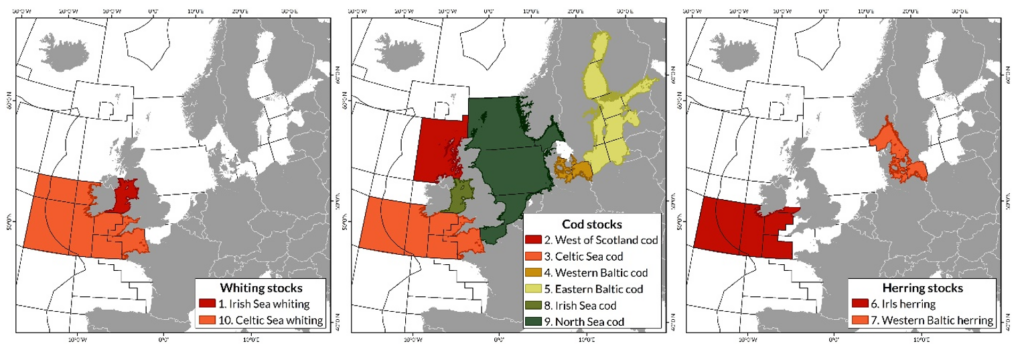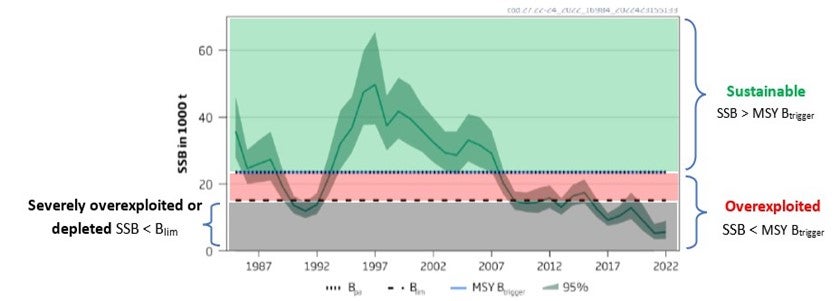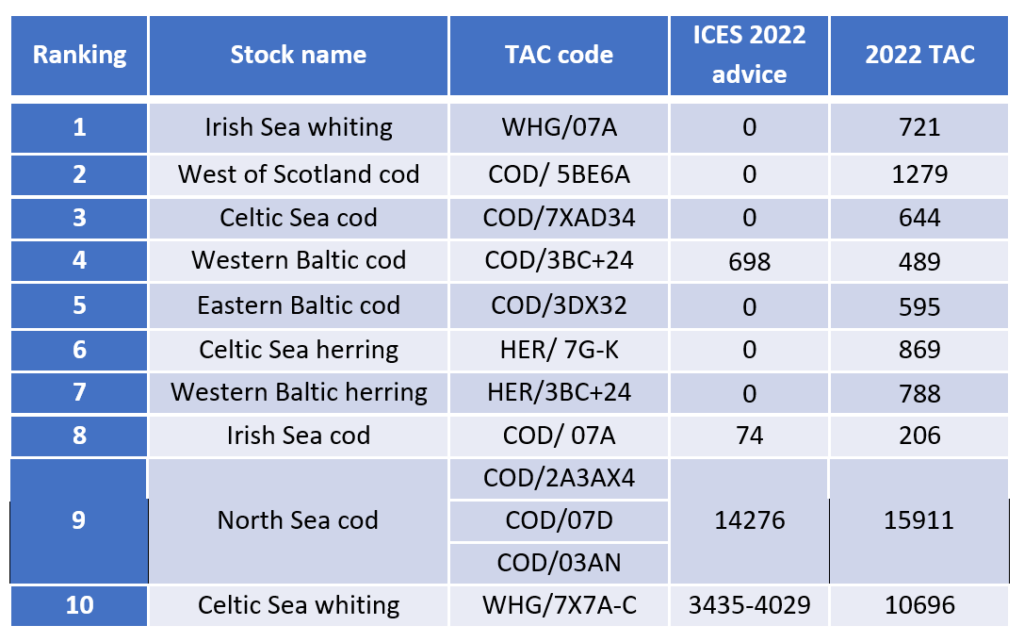Pitiful management leaves most depleted fish hanging by a thread
Press Release Date: December 9, 2022
Location: Brussels and London
Contact:
Emily Fairless | email: efairless@oceana.org | tel.: +32 478 038 490
Today, Oceana is publishing a report to draw attention to the state of the most depleted fish stocks in the Northeast Atlantic. In the report, Oceana analyses the main reasons that explain their dire condition and urges the EU and the UK to urgently recover these stocks above healthy levels, by adopting 2023 catch limits in line with scientific advice and existing domestic and international management commitments.
The report highlights 25 fish stocks, belonging to 12 species [1], that are known to be depleted in the Northeast Atlantic, ranging from the Baltic to the west of Scotland and from the Barents Sea to Iberian waters. Stocks of these fish are so severely reduced that their reproductive capacity is also impaired, putting them at risk of collapse. Species like herring, horse mackerel, Norway lobster and whiting, among others, have at least one stock in this worrying conservation state. But the most extreme case is that of cod, with the highest number of depleted stocks (nine) across the whole region.
Vera Coelho, senior director of advocacy at Oceana in Europe, said: “EU and UK decision-makers seem to have given up on managing depleted fish populations. Recovering these severely overfished stocks will take effort, and political leadership in this regard is now more urgent than ever, given not only the poor status of depleted stocks, but also their weakened resilience to anthropogenic impacts, such as habitat degradation and climate change.”
Despite a binding commitment to recover fish stocks to sustainable levels in many different pieces of legislation, such as the EU’s Common Fisheries Policy and the UK Fisheries Act, decision-makers on both sides of the Channel are still effectively turning a blind eye to the situation of depleted fish stocks. For example, abundance of Irish Sea whiting, West of Scotland cod and Celtic Sea cod, is only 8%,16% and 21%, respectively, of their abundance targets.
Hugo Tagholm, executive director for Oceana in the UK, added: “Overfishing continues to drive the decimation of iconic fish species and populations across the Northeast Atlantic. Our report found that 7 out of 10 of the most depleted fish stocks in the Northeast Atlantic are in UK waters. Britain’s much-loved cod, faces potential population collapse, unless urgent action is taken to follow the scientific advice to allow populations to recover and thrive again. Our seas will never recover until countries unite to fish within sustainable limits, protect marine habitats and prevent industrial trawlers and fishing methods from displacing and destroying local fishing interests.”
Most of the 25 depleted fish stocks identified in Oceana’s report are usually caught together with other species in mixed fisheries. Management decisions tend to prioritise catches of the most productive stocks. This results in incidental catches of the least abundant and most vulnerable stocks, at levels that are too high to allow them to recover. Additionally, illegal discarding continues – despite the obligation to retain on board and count all fish caught against quotas. This means that the actual catch of depleted stocks is well above the scientific advice to recover them. In most cases, due to their alarming conservation status, the scientific advice from the International Council for the Exploration of the Sea – ICES is for a major reduction in catches, or no catches at all.
In its report, Oceana is calling on the EU and UK to urgently:
- Adopt multi-year management strategies for stock recovery
- Follow scientific advice when setting catch limits
- Prioritise the recovery needs of depleted stocks in mixed fisheries
- Implement the most effective bycatch reduction measures, and
- Ban anthropogenic activities that negatively affect depleted stocks.

Background
Fish stocks are classified into different conservation categories depending on whether their abundance (biomass) is above or below certain reference points. For the purposes of the report, stocks were assigned three main possible conservation states based on the reference points used by ICES:
- Sustainable, if the stock biomass is above Maximum Sustainable Yield (MSY) [2] levels (MSY Btrigger)
- Overexploited, if the stock biomass is below MSY levels (MSY Btrigger)
- Severely overexploited or depleted, if the stock biomass is below safe biological limits (Blim).


*ENDS*
Notes to editors
[1] Species with at least one population (stock) known or considered to be depleted in the Northeast Atlantic: (1) anchovy; (2) blue ling; (3) cod; (4) eel; (5) herring; (6) horse mackerel; (7) Norway lobster; 8) orange roughy; (9) beaked redfish; (10) sandeel; (11) sardine; and (12) whiting
[2] MSY is the maximum catch that can be extracted from a fish or other population in the long term
Learn more:
Report “On the brink: The most depleted fish stocks in the Northeast Atlantic”
#EndOverfishing
This press release is also available in the following languages: Danish, French, German, and Portuguese.

